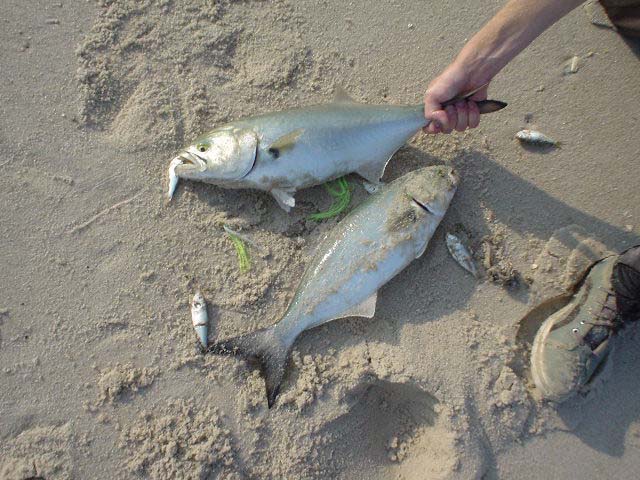Like other toothy gamefish, bluefish require a wire bite tippet to prevent bite offs (or at the least very heavy mono shock tippet - I prefer wire). Since I don't care for standard wire leaders for FFing I like to tie my bluefish flies with an integral bite tippet. This technique will also make for a "frame" for cuda or muskie flies as well. You'll need a crimping tool, three crimp sleeves, kevlar or other heavy thread, and about 10" of braided #60 lb wire. For bluefish, I prefer flies with only a single barbless hook as blues hook themselves and clamp down hard making unhooking them difficult. Anything more than a single hook is more trouble than it's worth for these fellas. Big blues are impressed by size, speed, and bright color, so I like large flies about 5-8" that can be speed stripped with a two hand retrieve. While stripers tend to hit the forward part of a fly, or simply inhale a typical sized clouser of popper, bluefish have an uncanny tendency to bite down in the center or tail end of a large fly or lure so, for this reason, I prefer the hook to ride a bit toward the rear of my bluefish flies.
STEP 1: Tie the end of the wire to the hook shank using kevlar thread, I usually loop the wire once through the hook eye. Apply a heavy coat of cement. Although not shown in this image, it adds some weight and durability if you wrap the shank with wire after this step.
STEP 2: Crimp two sleeves about 2-3" up from the eye of the hook (make sure the crimp is tight). These sleeves will provide a base to tie the front part of the fly and keep it from sliding up and down the wire. Then crimp a loop at the far end of the wire to attach your tippet to (see image).
STEP 3: Tie in the back half of the fly right onto the hook like a conventional fly. When finished, cement the thread heavily and allow to dry. Then remove the hook from the vise and put the wire in the vise right behind the double crimps. Proceed to tie the forward part of the fly right onto the crimps. The finished flies in the photo have a rabbit strip collar and some crystal flash although they're not needed to entice bluefish. Bright colors like yellow, pink, and silver really help get the fish's attention, especially when they're distracted by swarms of bait and frothy surf.
STEP 1: Tie the end of the wire to the hook shank using kevlar thread, I usually loop the wire once through the hook eye. Apply a heavy coat of cement. Although not shown in this image, it adds some weight and durability if you wrap the shank with wire after this step.
STEP 2: Crimp two sleeves about 2-3" up from the eye of the hook (make sure the crimp is tight). These sleeves will provide a base to tie the front part of the fly and keep it from sliding up and down the wire. Then crimp a loop at the far end of the wire to attach your tippet to (see image).
STEP 3: Tie in the back half of the fly right onto the hook like a conventional fly. When finished, cement the thread heavily and allow to dry. Then remove the hook from the vise and put the wire in the vise right behind the double crimps. Proceed to tie the forward part of the fly right onto the crimps. The finished flies in the photo have a rabbit strip collar and some crystal flash although they're not needed to entice bluefish. Bright colors like yellow, pink, and silver really help get the fish's attention, especially when they're distracted by swarms of bait and frothy surf.










